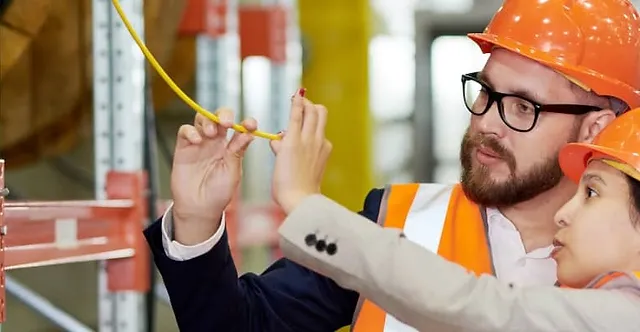Establishing and maintaining a culture of quality affects Latin America’s bottom line and competitiveness says a study by ASQ and Forbes. While challenges exist, improvement is forthcoming.
The role of the customer is a critical factor in creating and sustaining a successful culture of quality, according to new research by ASQ and Forbes Insights, but only 24 percent of respondents say their organization is highly effective in identifying customer needs.
And while 90 percent of respondents say customer needs are the main drivers of their quality programs, only 34 percent say customer needs dictate their organizations’ quality objectives.
The research —“Culture of Quality: Accelerating Growth and Performance in the Enterprise” — explores organizations’ support of quality and the key components of a successful culture of quality. The study offers — from organizations like Samsung, FedEx, and Tata — actionable insight into how a quality-driven culture can accelerate business performance.
The research draws on the responses of 1,010 senior executives and 1,281 quality professionals worldwide from a multitude of industries. The survey was conducted online in April and included respondents from Latin American countries such as Chile, Colombia, Ecuador, Peru, Uruguay and Venezuela.
Commitment to customers should be at the heart of a quality program, according to Edwin Garro, director general for PXS, a quality improvement consulting firm in Costa Rica.
To best gauge customer satisfaction, 60 percent of organizations use customer input to evaluate performance against quality metrics, according to the report. Furthermore, 76 percent of respondents say customer input is either effective or highly effective.
Quality culture can positively affect bottom line
In addition to the role of the customer, clearly stated quality vision and values, and unequivocal leadership are key components to a successful culture of quality that can help organizations drive results.
But only about 60 percent of all respondents say management unequivocally supports their organization’s quality vision and values, of which about 60 percent say are clearly stated.
When organizational leaders support quality, and when vision and values are clearly stated and compelling, quality cultures can have a dramatic and positive effect on an organization’s bottom line.
Rebecca Yeung, managing director of service experience leadership at FedEx, said the launch of their Quality Driven Management program has had a dramatic effect on their business.
“Since the launch of our Quality Driven Management program in 2008, many of our business units have significantly improved their on-time service level while reducing error,” she said. “At the same time, we have been able to achieve hundreds of millions of dollars of cost savings”.
Garro finds in Latin America, quality practices, awareness and results vary quite a bit from country to country, and also within each country.
“The workforce ranges from illiterate workers to Nobel Prize winners; infrastructure goes from small villages lacking basic services to modern megacities,” he said. “This results in quality standards that can range from very low to world class.”
Garro believes education plays a key role in impacting the level of quality in Latin America. Most Latin countries have literacy rates above 90 percent while countries like El Salvador, Honduras, Guatemala and Nicaragua are still below the world average of 84 percent.
“Multi-national companies appreciate and value a more highly educated and skilled workforce,” he said. “For example, Intel in Costa Rica closed its 17-year manufacturing operation and turned it into a state-of-the-art R&D facility. This shift to a high value-added operation was primarily due to the high level of education in the country”.
Disparities exist between senior leaders, quality professionals
According to the research, 59 percent of all respondents say their organizations exhibit a culture of quality. But the pursuit of quality differs greatly between the senior executives and the quality professionals polled: 20 percent of senior executives rate their quality culture as world class — or among the best in the world — while only 5 percent of quality professionals rate the programs similarly.
In fact, 58.5 percent of the quality professionals surveyed rated their organization’s pursuit of quality as average or below average.
The disparity between senior leaders and quality professionals’ view of their organization’s pursuit of quality is likely due to “filtered, big-picture material that has been ‘prettied up’ for management,” according to Elizabeth Keim, a managing partner at Integrated Quality Resources, and project advisor.
Challenges exist, improvement forthcoming
When asked what challenges their organization faces in adapting quality programs to meet the needs of an international workforce, 35 percent cite the lack of uniform quality standards while 34 percent say it’s the use of technology to ensure quality. Thirty-two percent cite the lack of specialized training.
Cultural differences also play a role — and challenge — when adapting quality programs worldwide.
For Latin American countries, government maturity has a major impact on quality initiatives. Garro says all Latin American countries have national metrology, standardization and accreditation bodies that collaborate in economic development, consumer protection, innovation and R&D, and international competition.
“Unfortunately, many of these government organizations are still bureaucratic and inefficient compared with the private sector that they serve,” he said.
One example of a successful collaboration between government and private sector is the formal process to certify pisco, a popular Peruvian liquor made from grapes. By 2008, more than 300 Peruvian pisco companies had certified their operations with better quality and fewer costs, resulting in larger markets (local and international).
According to the research, to help overcome quality-related challenges, 53 percent of all respondents say their organization plans to increase investment in quality programs over the next 18 months — with 17 percent describing the increase as substantial. Sixty-six percent of world-class organizations plan to increase investment in their quality programs with 35 percent of those respondents saying their investment will be substantial.
With world-class companies leading the investment charge in quality programs, their lead on other companies will continue to grow.
Sampaio said quality professionals can help their companies make up some ground on world-class organizations by translating “defects and process improvements into dollars and euros.” When this happens, “the C-suite will be more open to the pursuit of quality.”
Garro believes with growth in quality education, infrastructure investments and strong government support, more Latin American CEOs should begin seeing the positive benefits to expanding their quality improvement programs.
To download the free “Culture of Quality: Accelerating Growth and Performance in the Enterprise” visit cultureofquality.org
Edwin Garro is Director General, PXS, a quality improvement consulting firm in Costa Rica. He is also a Fellow with the American Society for Quality and Instructor Certificado, Pensamiento Latera and Instructor Certificado, Seis Sombreros de Pensar with De Bono Thinking Systems.


